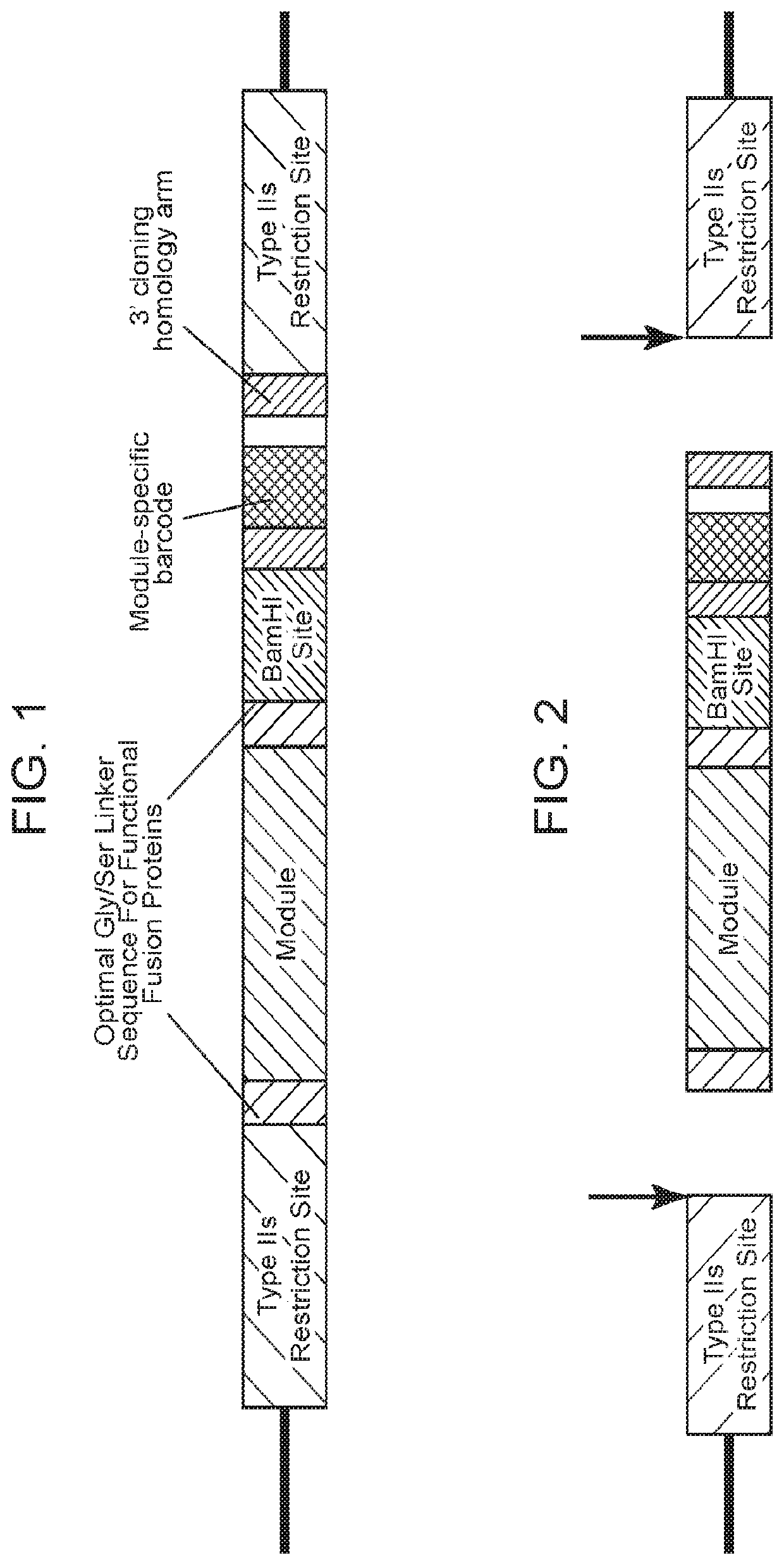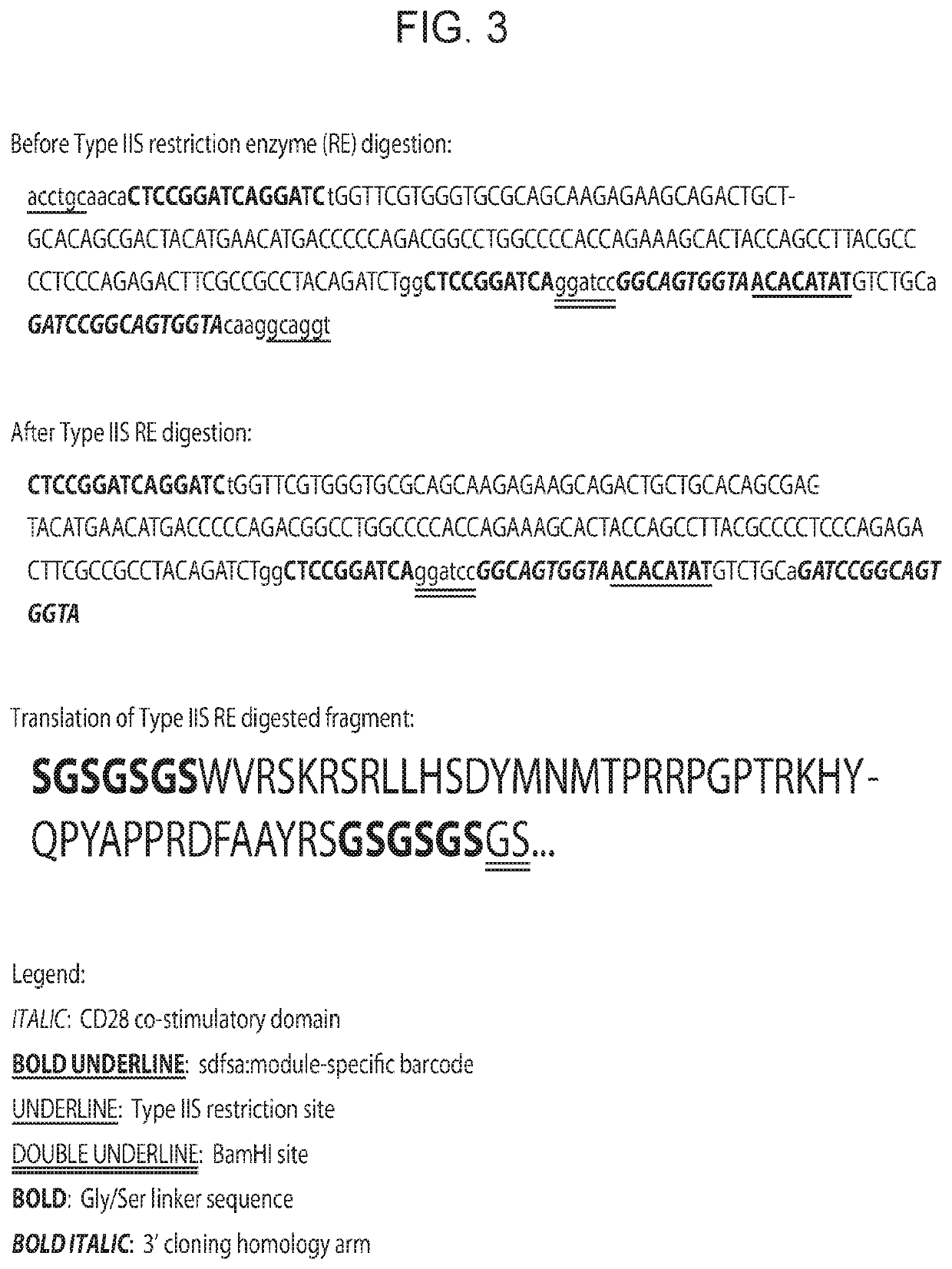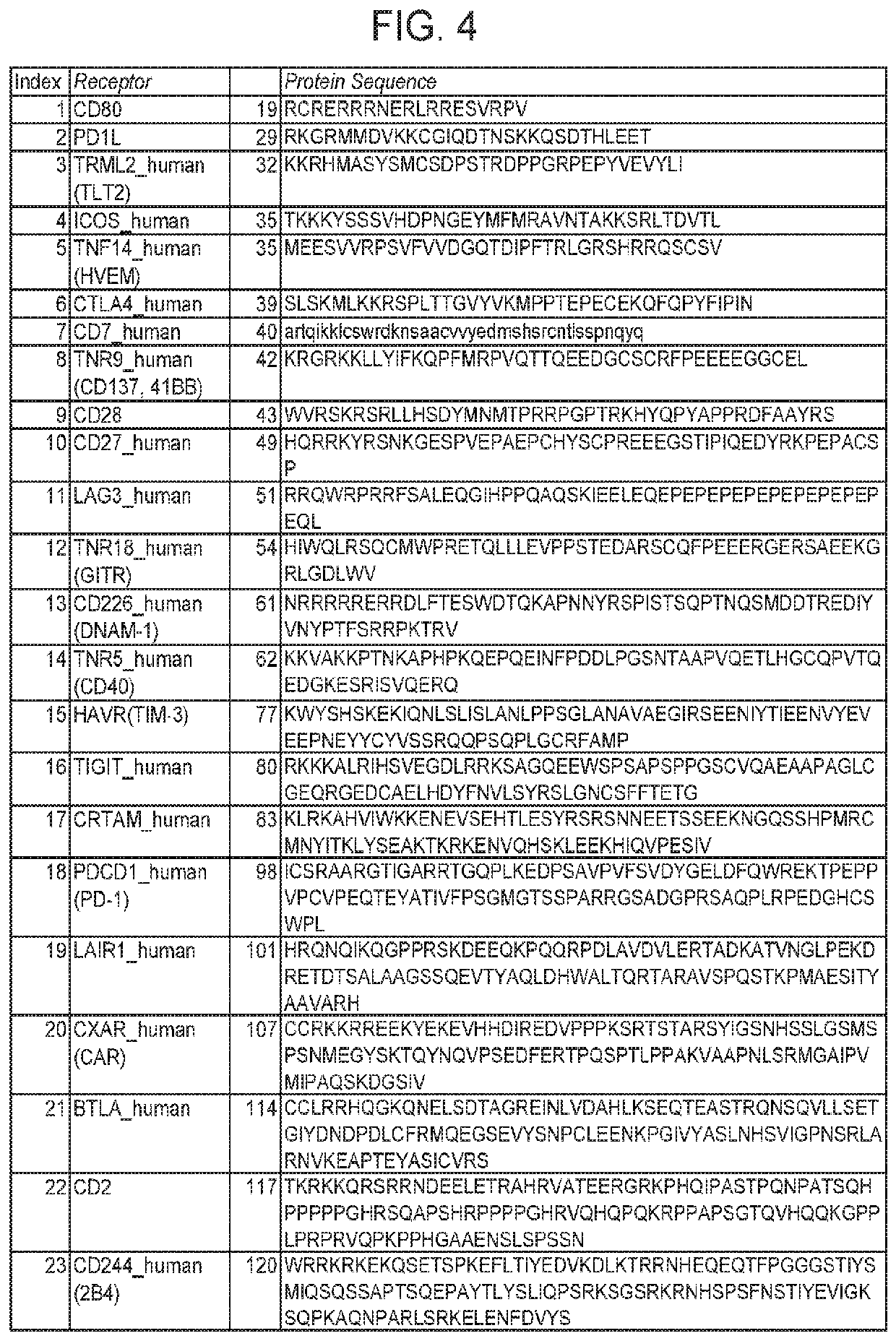Modular polypeptide libraries and methods of making and using same
- Summary
- Abstract
- Description
- Claims
- Application Information
AI Technical Summary
Benefits of technology
Problems solved by technology
Method used
Image
Examples
example 1
ion and Screening of Co-Modulatory Domain Modular Libraries
[0354]To prepare barcoded module-encoding nucleic acid fragments containing the necessary elements for library construction, nucleic acids encoding the polypeptide modules (i.e., co-modulatory domains (i.e., co-stimulatory or co-inhibitory)) were subcloned into a cloning vector suitable for sequencing and Type IIS restriction enzyme digestion. Following the subcloning the vector contained: the module-encoding sequence, optimal Gly / Ser linker sequences flanking the module-encoding sequence, a module-specific barcode sequence, 3′ cloning homology arms flanking the module-specific barcode sequence, a BamHI restriction site between the module-encoding sequence and the module-specific barcode sequence and Type IIS restriction enzyme sites on both the 5′ end of the module-encoding sequence and the 3′ end of the module-specific barcode sequence (FIG. 1). The subcloned vector inserts were sequenced to confirm identity of the inserte...
example 2
ion of Comprehensive Assembly of a 61×61 Two Dimensional Library
[0367]Sixty-one variable CAR modules (Table 2, provided in FIG. 25) were assembled into a barcoded nucleic acid library encoding two dimensional (2D) synthetic modular CAR polypeptides by nested assembly. The library was deep sequenced by a sequencing by synthesis (SBS) method utilizing a MiSeq system (Illumina Inc., Hayward, Calif.) and the read count of each assembled library member was determined (FIG. 26).
[0368]Of the 3,721 total possible library members (i.e., CAR variants) all possible library members were detected by sequencing, with a maximum frequency of 1216 counts and a minimum of 2 counts. The average number of counts across the library was 333 with a median of 311 counts and a standard deviation of 140. 90% of the library members were represented with counts that were within 2-fold of the median and 98% within 3-fold of the median.
[0369]As such, sequencing confirms that the nested assembly method is capable...
example 3
art Normalization
[0370]A method was developed to enhance the distribution of clones in the combinatorial library using library part normalization.
[0371]In any combinatorial assembly reaction, some parts (e.g., modules) are integrated into the assembled products more efficiently than others. As a consequence, assembled products (e.g., protein variants) that contain parts that integrate relatively inefficiently are underrepresented in or absent from the final combinatorial library. For similar reasons, other assembled products (e.g., those protein variants containing parts that integrate efficiently) are overly abundant, and, consequently, oversampled in all downstream assays.
[0372]To address this problem, a method for improving library assembly was developed. In the method, an initial assembly reaction is carried out in which every part (DNA insert) is present at the same volume. For this purpose, a master mix was created containing 1 uL of each part. After the combinatorial assembly...
PUM
| Property | Measurement | Unit |
|---|---|---|
| Volume | aaaaa | aaaaa |
| Fluorescence | aaaaa | aaaaa |
| Heterogeneous phase system | aaaaa | aaaaa |
Abstract
Description
Claims
Application Information
 Login to View More
Login to View More - R&D
- Intellectual Property
- Life Sciences
- Materials
- Tech Scout
- Unparalleled Data Quality
- Higher Quality Content
- 60% Fewer Hallucinations
Browse by: Latest US Patents, China's latest patents, Technical Efficacy Thesaurus, Application Domain, Technology Topic, Popular Technical Reports.
© 2025 PatSnap. All rights reserved.Legal|Privacy policy|Modern Slavery Act Transparency Statement|Sitemap|About US| Contact US: help@patsnap.com



